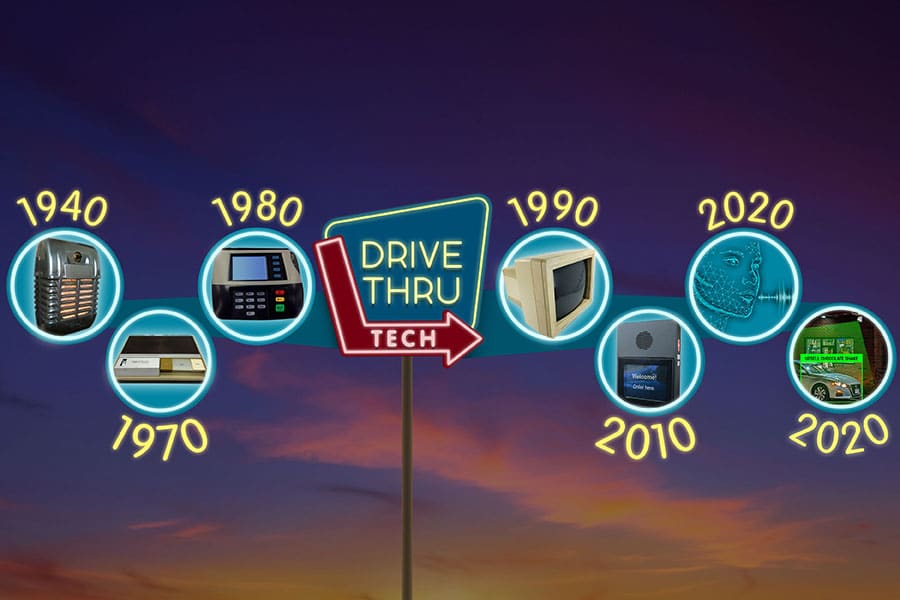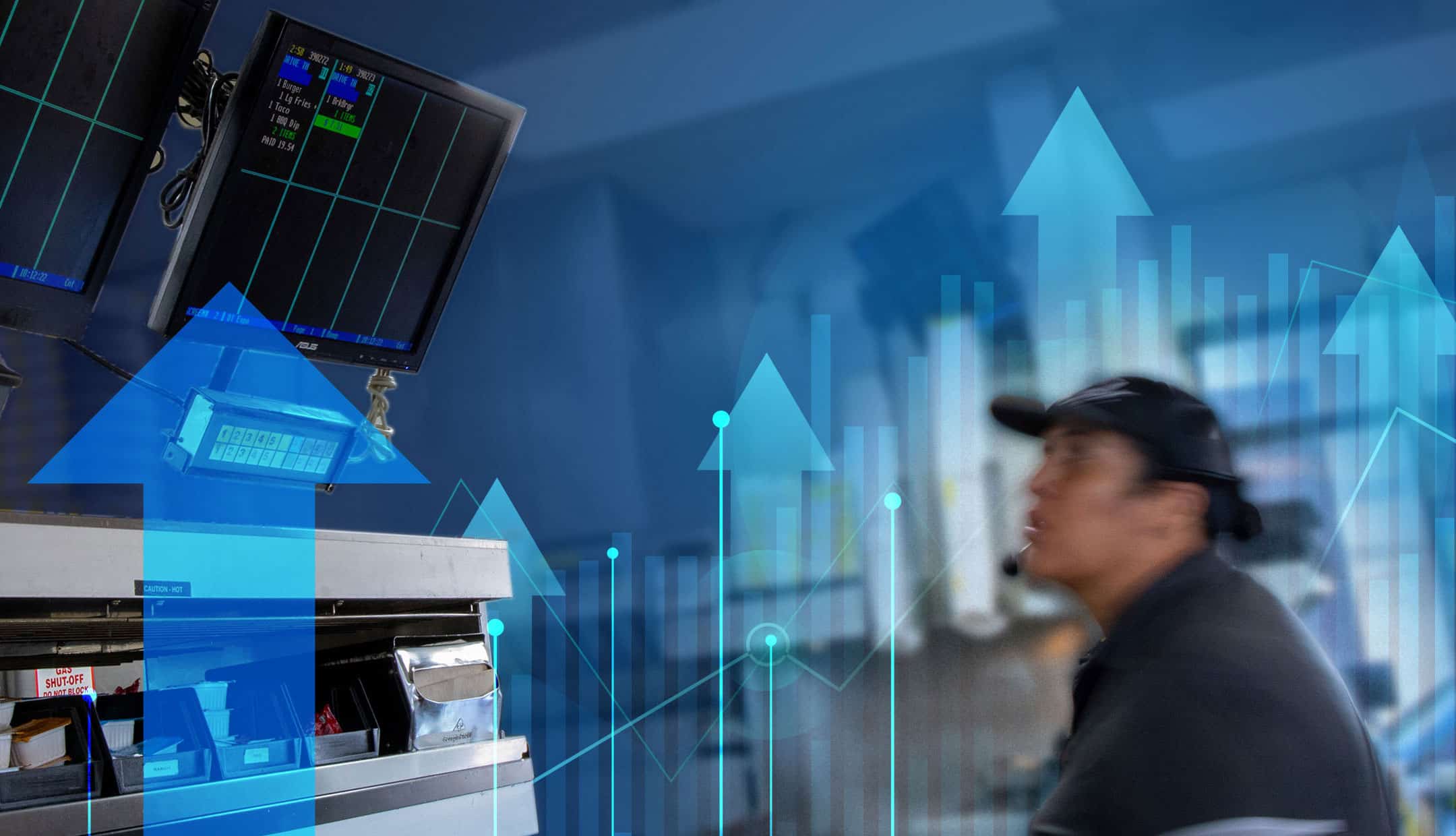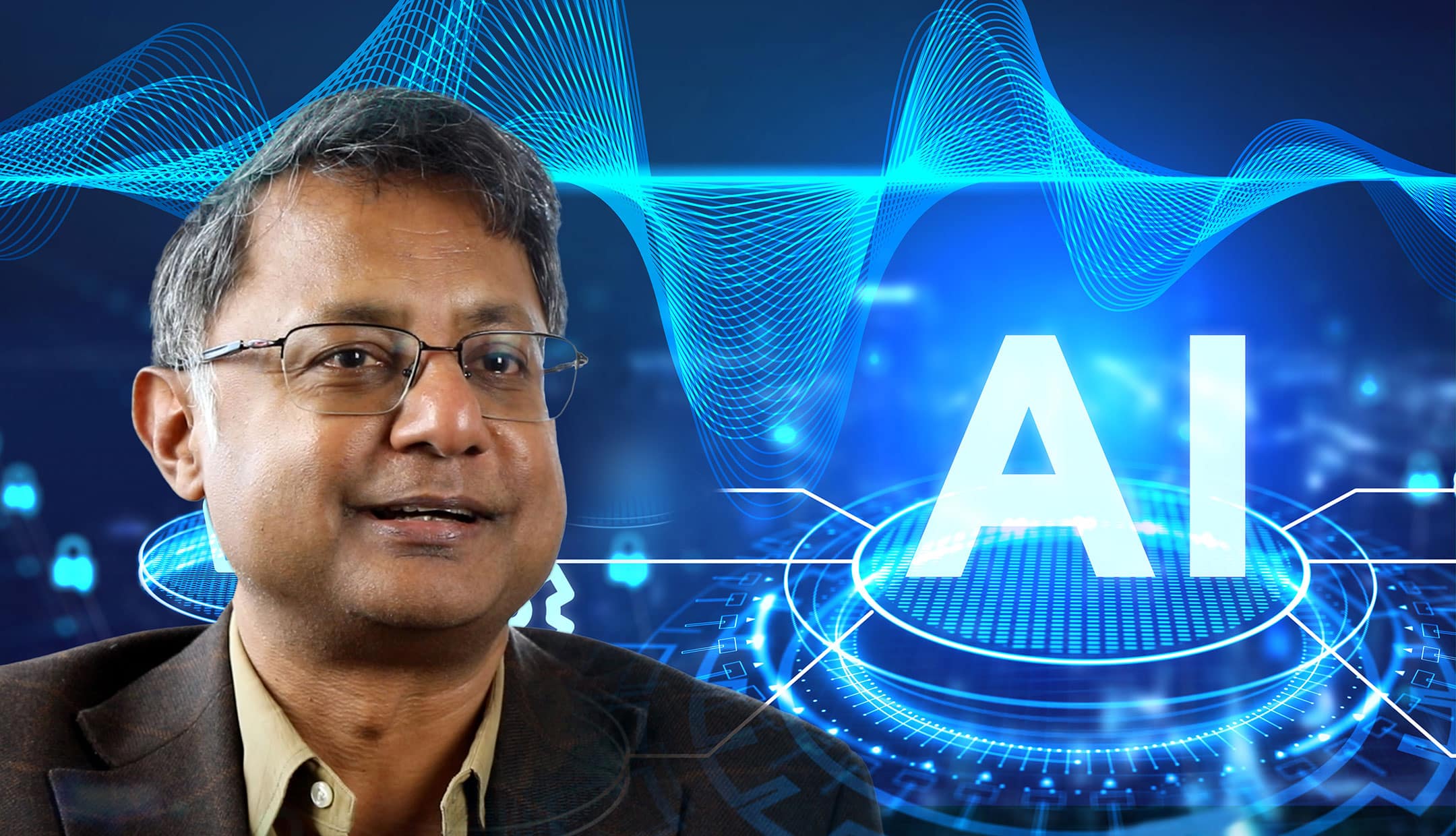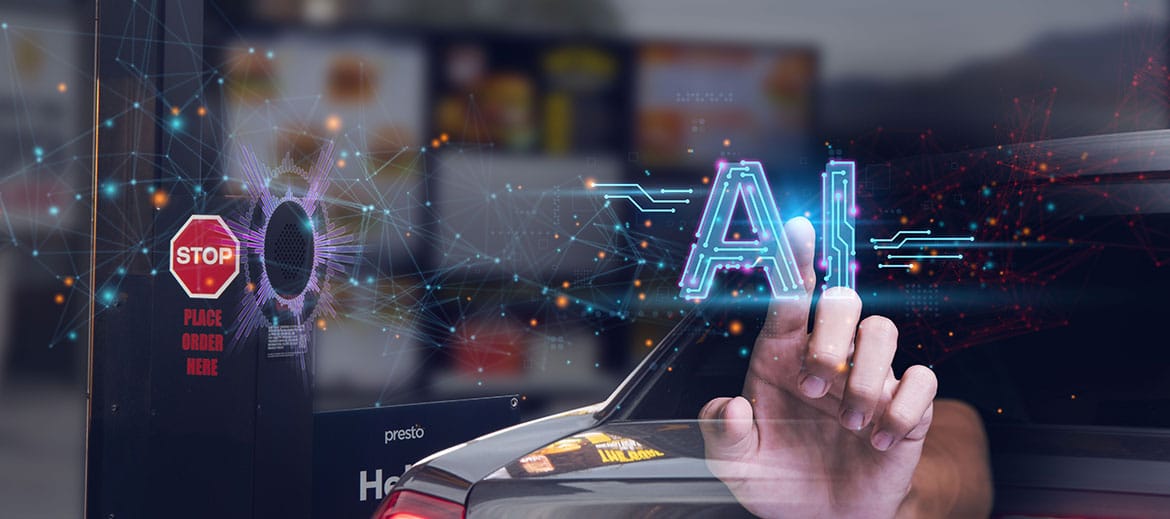Automation, optimization and artificial intelligence will be key technologies in advancing the drive-thru for decades to come.
If Harry and Esther were to sit in a time machine and travel to see what drive-thrus are like today, they’ll be surprised to see that the design of their original In-N-Out in 1948 with their two-way speaker invention and drive-thru window hasn’t changed much in the past 70 plus years.
Despite the same fundamental concept of the modern drive-thru to provide speed and convenience to diners to order their meal from the comfort of their own car, the industry has been slow to adopt new technology despite growing to over 200,000 drive-thrus in the U.S. In this article we share some pivotal innovations that have impacted the industry and what technology solutions are poised to disrupt the drive-thru industry and help it overcome the worst labor shortage that the U.S. has seen since WWII.
1940s: Two-Way Speaker Box
The history of the drive-thru begins with the drive-in. The Roaring Twenties saw tremendous growth in car ownership and drive-in restaurants with carhoppers quickly popped up to accommodate America’s new motorists. Fast-forward to the 1940s and close to 50% of American families owned a car and the drive-thru restaurant was in the near future.
Harry and Esther Snyder wanted to offer people a way of getting a quick and good meal without having to get out of their car, so they could just go in and out and leave, and hence, In-N-Out was born. Even though Red’s Giant Hamburg is credited to be the first drive-thru opening a year earlier in Springfield, Missouri, In-N-Out is officially the longest running drive-thru debuting their drive-thru window for motorists in 1948 in Baldwin, California.
Unbeknownst to Harry and Esther at the time, their two-way speaker system invention would be the technology that launched the modern-day drive-thru as we know it today. You drive up to a menu board and order into a microphone, then pull up to a window where you pay for your order and take your meal in a paper bag, all in the comfort of your own car.
1970s: Intercom System
It would take close to thirty years for drive-thrus to become mainstream, with McDonald’s opening their first drive-thru in 1975, but the number of drive-thrus has been growing leaps and bounds ever since.
As baby boomers entered the workforce and became busier than ever, so did the popularity of drive-thrus. There was an immediate need for more innovation to help reduce the wait time for drive-thru guests. The bottleneck usually started at the beginning of the drive-thru when guests had to wait to be greeted at the order kiosk. Up until this point, the drive-thru was still using some form of the wired two-way speaker that had a push-button intercom located near the service window. Because the order taker had to be near the intercom, drive-thru guests had to wait if the staff was busy taking care of other tasks.
As the wired intercom got upgraded to be wireless in the 1980s and eventually becoming a wireless headset for the drive-thru order taker, it was a major advancement in labor productivity in the restaurant industry, allowing staff members to multi-task moving about the restaurant to draw beverages, communicate with kitchen staff, and pack orders, while still being able to take drive-thru orders in an efficient manner. Even before the current labor shortage, restaurants were already looking at technology to increase labor productivity and reduce costs in their drive-thru operations and in parallel, looking at ways to reduce the drive-thru wait time.
1980s: Point of Sale (POS) Terminals
The first Point of Sale (POS) system that restaurants used was the cash register, and it wasn’t until the 1980s that there was a major advancement. With the upgraded Point of Sale (POS) terminals, it was the first digital technology to be adopted by the restaurant industry. It helped speed up the food ordering process at the drive-thru by having a POS system that included a physical button for every item on the menu and the elimination of handwritten orders. It was also the first time a POS could be connected to other devices like a printer, allowing the drive-thru to easily send orders to the kitchen, with the POS system printing the paper orders in the kitchen.
When the POS terminals came out, they were widely recognized as a major innovation that was set to change the face of the restaurant and retail industry. However, even as POS terminals have become ubiquitous over the decades, the technology behind them largely remains the same.
But this is now changing—permanently. The POS model is evolving at a fundamental level. There are four key trends that are driving this change and are responsible for its acceleration.
- Decline of the P.C. & emergence of mobile
- Increasing labor shortage
- Higher guest expectations
- Growth stagnation & cost focus
Presto is the current market leader in next-gen restaurant POS systems offering an all-in-one solution for point of sale, reporting and analytics, and staff management. The core terminal is a powerful, cloud-based solution with a user-friendly interface that is fully customizable for your specific needs. It updates automatically to provide drive-thrus with the latest features instantly. This terminal seamlessly integrates with existing concepts to help restaurants get the most out of their technology investment today while future-proofing it.
1990s: Kitchen Display System (KDS)
With the roll-out of the kitchen display system (KDS) in the 1990s, orders could be sent directly to the kitchen without having to print out the orders or use handwritten orders. This technology greatly improved the speed of the drive-thru because orders could be immediately sent to the kitchen from the order taker and get prepared in an organized and efficient manner without the kitchen team having to manually organize the paper orders and menu items.
The KDS greatly optimizes the handoff between the drive-thru order taker and the kitchen: Replacing and improving paper-based processes and providing new capabilities. Everything is now digital. No more lost, ripped, or burned order tickets. Information is now centralized and organized, greatly reducing miscommunications with verbal or handwritten updates to orders. Difficult tasks are automated such as order item sequencing and timing tickets. Labor productivity is improved because these error-prone tasks that were once done by hand are now completed automatically and accurately.
The margin for human error is greatly reduced as drive-thru orders automatically push through to the kitchen through a combination of the POS and KDS systems.
2010s: Order Confirmation Boards (OCB)
A technology that has mixed opinions amongst drive-thru operators is the order confirmation board (OCB) which first gained traction in drive-thrus in the last decade and is still a technology that is being slowly adopted. The immediate benefit is clear, ensuring order accuracy. These digital signs list out the guest’s menu items, order quantity, and running total in real-time, allowing guests to confirm or make changes before driving forward to the payment window.
Even though speed and order accuracy goes hand in hand for diners choosing the drive-thru, guests are likely to be more disappointed if the order is wrong, even if they had to wait a bit longer. When team members mishear orders and enter them inaccurately, it also has a direct impact on the bottom line. Order confirmation boards (OCB) are a cost-efficient way to improve order accuracy in the drive-thru and a simple way to double-check the order with the guest.
2020s: A.I. Voice Assistant
Exciting new developments in A.I.-powered voice technology allow drive-thru guests to place orders without staff assistance, even in noisy environments. Voice ordering can expedite the ordering process at drive-thrus, and it can also help restaurants automatically cross-sell items and increase check sizes.
Turning to A.I. voice technology is an immediate solution and is likely to be the new norm over the next few years for QSRs and fast-casual restaurants to mitigate the labor shortage and automate the drive-thru process. The friendly, human-like assistant never lets guests wait, takes their order accurately, never forgets to upsell, and automatically sends the order to the POS system without any delay. While automating the drive-thru line, it is also helping restaurants retain their best staff because they can have them focus on other tasks that require greater human oversight.
Many QSR chains such as McDonald’s have been reported to be actively evaluating A.I. voice assistant solutions for their drive-thrus since 2019 since they purchased a voice tech startup and then ultimately sold the technology to IBM in 2021 to help further develop for them.
After a successful pilot in 2021 with Checkers & Rally’s, a mid-sized burger chain, Presto was chosen to be the exclusive partner to rollout automated voice ordering technology to over 200 of their drive-thru locations, making Checkers & Rally’s one of the first in the industry to adopt this next-gen voice technology for drive-thru order taking in such a huge number.
During this time, Presto’s A.I. voice assistant solution delivered a high level of automation and accuracy, with over 98% of drive-thru orders completed with minimal intervention from restaurant employees. The Presto solution also performed well with unique or infrequently ordered menu items and easily managed various guest accents.
Furthermore, the return on investment (ROI) on this technology is solid as it starts paying for itself from day one. Key benefits for restaurant drive-thrus adopting A.I. voice technology for order taking include:
- Improve Labor Shortage: Automating the most labor-dependent tasks
- Improve Order Accuracy: Minimizing human error
- Increase Revenue: Consistent and adaptive upselling
- Improve Staff Retention: Increase job satisfaction
- Improve Guest Experience: Reduction in wait times and a more personalized experience
- Improve Margins: Reduction in costs and errors
2020s: Computer Vision
Without technologies that predict demand and offer suggestions, QSRs can’t operate at peak throughput potential. Because the standard drive-thru model has historically failed to bridge the personalization gap, as drive-thrus evolve, it will be increasingly more important to identify repeat guests as they enter the drive-thru queue. This will allow restaurant operators to provide a tailored guest experience using personalized menu boards, adaptive upsells, and automated payments to reduce overall wait time in the drive-thru.
Using computer vision and strategically placed cameras in the drive-thru lane and kitchen, drive-thrus can use preferences and patterns from past orders to make upselling suggestions and increase check size. It’s even possible to display past orders on the screen to accelerate transactions and make re-orders easy. Your drive-thru will increase frequency through integration with rewards programs that encourage guests to spend more. Getting connected with real-time alerts will allow you to respond to long lines in real-time through suggestions such as time of day, queue length, weather, and trending items.
With Presto Vision, our computer vision technology provides drive-thrus with information that helps them improve efficiency, personalize guest experiences, ensure correctly-packaged orders, and allocate resources appropriately by accurately predicting demand.
Key benefits for restaurant drive-thrus adopting computer vision include:
- Identify Problems: Measures real-time, true speed of service
- Personalization: Offers personalized menu boards & upsells to repeat guests
- Faster Payment Process: Takes automated payments using pre-stored credit card
- Improve Labor Productivity: Make line-busting more efficient
The Future of Drive-thru is Now
With Americans visiting the drive-thru about 6 billion times each year according to some statistics, the faster operators can move a motorist through the drive-thru, the more people they can serve and the more revenue they can generate.
Early investment in digital technologies proved instrumental in helping companies survive the pandemic. According to McKinsey, “Nearly half of respondents at successful companies say they were first to market with innovations during the crisis and that they were the first companies in their industries to experiment with new digital technologies.” For many companies, early technology adoption was not a risk; rather, it was a major asset.
Presto has a winning combination for drive-thru operators offering both A.I. voice assistant and computer vision technologies. When Presto Voice and Presto Vision are combined together, it streamlines the overall operations and guest experience while increasing the guest-to-staff ratio in the drive-thru. We believe in the next few years, the majority of drive-thrus will leverage this type of technology to optimize operations, improve order accuracy, personalize guest experiences and provide rich drive-thru analytics.
Technology is the solution drive-thrus need to solve their growing portfolio of operational issues amid the ongoing labor shortage. With technology, restaurants can optimize their use of staff members and resources. They can expedite the drive-thru and ordering experience. They can ensure order accuracy and identify mistakes in real-time. They can increase ROI by leveraging technology that automatically upsells and cross-sells. They can make servers more efficient by enabling them with helpful tools that reduce unnecessary busywork and provide real-time recommendations. Most of all, they can offer an experience that compels happy guests to keep coming back for more.
About Presto
Presto overlays next-gen digital solutions onto the physical world. Our enterprise-grade touch, vision, and voice technologies help hospitality businesses thrive while delighting guests. With over 100 million guests using Presto each month and 300,000 systems shipped, we are one of the largest technology providers in the industry.
Founded at M.I.T. in 2008, Presto is headquartered in Silicon Valley, Calif. with customers including top 20 hospitality chains such as Applebee’s, Aramark, Chili’s Grill & Bar, Denny’s, and Outback Steakhouse.



